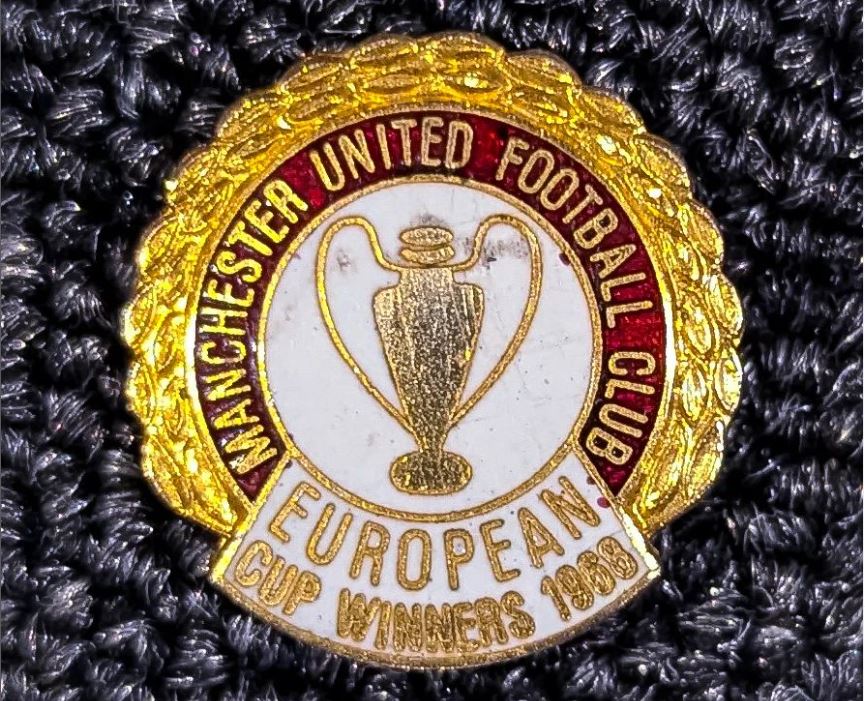Manchester United’s badge is more than just an emblem, it’s a symbol that reflects the club’s rich history, achievements, and identity. Over the years, the badge has undergone several transformations, each marking a significant period in the club’s development and its global influence. This article explores the history of the Manchester United badge, its design changes, and its symbolic meaning.
The Origins of the Man Utd Badge
The roots of Manchester United’s badge can be traced back to the club’s founding in 1878 when it was known as Newton Heath LYR F.C. The early badge was heavily influenced by the Manchester coat of arms and incorporated elements like a ship, symbolising Manchester’s industrial heritage and its importance as a port city. The initial badges were complex in design and focused on highlighting the club’s connection to the local community.
When Newton Heath was renamed Manchester United in 1902, the badge underwent its first significant transformation. The new crest introduced the name “Manchester United” and retained the ship as a key element, reflecting the club’s ties to the city and its ambitions for wider recognition. This early badge laid the foundation for the many redesigns that would follow.
The Introduction of the Red Devil
The most iconic change to the Manchester United badge occurred in the early 1970s when the club added the image of a red devil holding a pitchfork. This symbol, which is now synonymous with the club’s identity, was adopted from the club’s nickname, “The Red Devils.” Sir Matt Busby, the club’s legendary manager, is credited with popularising the nickname, which he felt represented the club’s aggressive style of play and fierce competitiveness.
The devil icon was initially incorporated into the club’s official crest for matchday programmes and scarves, before eventually being formalised as part of the badge design. This addition was a turning point for the club’s brand identity, making it instantly recognisable to fans around the world.
From Coat of Arms to Modern Crest: Evolution Through the Decades
Manchester United’s badge has seen multiple changes over the decades, primarily focused on simplifying and modernising the design. In the 1990s, the club made significant alterations to make the badge more adaptable for commercial use. One notable change was the removal of the words “Football Club” from the crest in 1998, a decision made to reflect the growing commercialisation and global reach of the club.
This change stirred controversy among the fans, many of whom felt it distanced the club from its roots as a community-focused football team. Despite the backlash, the simplified badge became the official logo used on merchandise and branding, helping Manchester United become one of the most commercially successful clubs in the world.
Recent Developments: Revisiting Tradition
In recent years, there has been talk about reintroducing the words “Football Club” into the badge as part of efforts to reconnect with the club’s traditional identity. Joel Glazer, one of the club’s owners, suggested that the badge should reflect the club’s heritage as more than just a commercial enterprise. The move aims to dispel the perception that the club is more focused on business rather than its rich footballing legacy.
The plan to reinstate “Football Club” comes in the wake of fan protests against the ownership and the direction of the club. Supporters have called for changes that honour the club’s history and align with its values. This proposal has yet to be finalised but shows the club’s willingness to consider the views of its loyal fan base.
The Symbolism Behind the Badge
The Manchester United badge is packed with symbolism that encapsulates the club’s ethos and city heritage. The red devil, which has been central to the badge for over five decades, symbolises the team’s spirit and resilience. The ship, a constant feature since the early designs, pays homage to Manchester’s maritime past and its role as a hub of industry and commerce.
The colour red, predominant in the badge and the team’s kit, represents passion and energy, traits that are synonymous with the club’s playing style. The circular shape of the badge signifies unity and wholeness, while the text “Manchester United” boldly announces the club’s identity to the world.
Future of the Man Utd Badge
The Manchester United badge is not just a piece of art, it’s a testament to the club’s storied history and its ambition. With recent discussions about potential changes, it’s clear that the club understands the importance of its visual identity. Any future redesigns will likely seek to balance the need for modernity with a respect for tradition.
As Manchester United continues to evolve as both a football team and a global brand, its badge will remain a vital symbol of its journey. Whether adorned on kits, banners, or merchandise, the emblem will always represent the passion, pride, and enduring spirit of one of the world’s most iconic football clubs.
Conclusion
The Manchester United badge is more than just an emblem; it’s a reflection of the club’s identity, history, and global influence. From its early days influenced by the Manchester coat of arms to the introduction of the iconic red devil, the badge has continually adapted to reflect the club’s ambitions and values. While future changes may lie ahead, the badge will always serve as a reminder of the club’s proud heritage and its commitment to the sport and its fans.
Read More: Football Pitches: The Heart of the Beautiful Game
